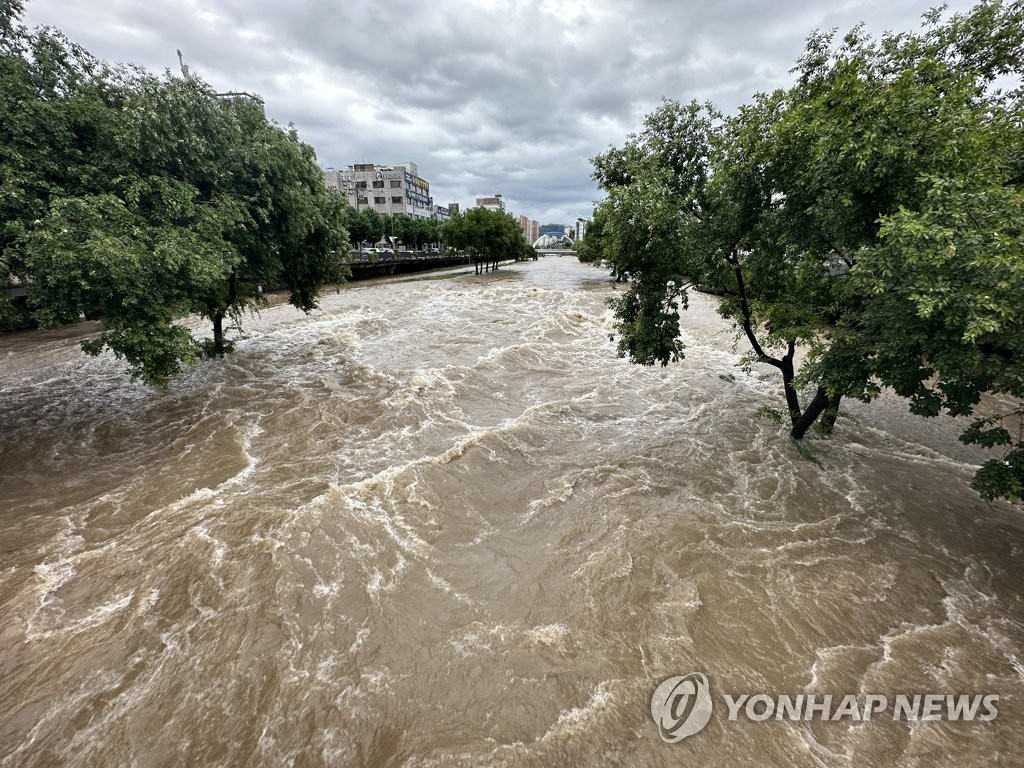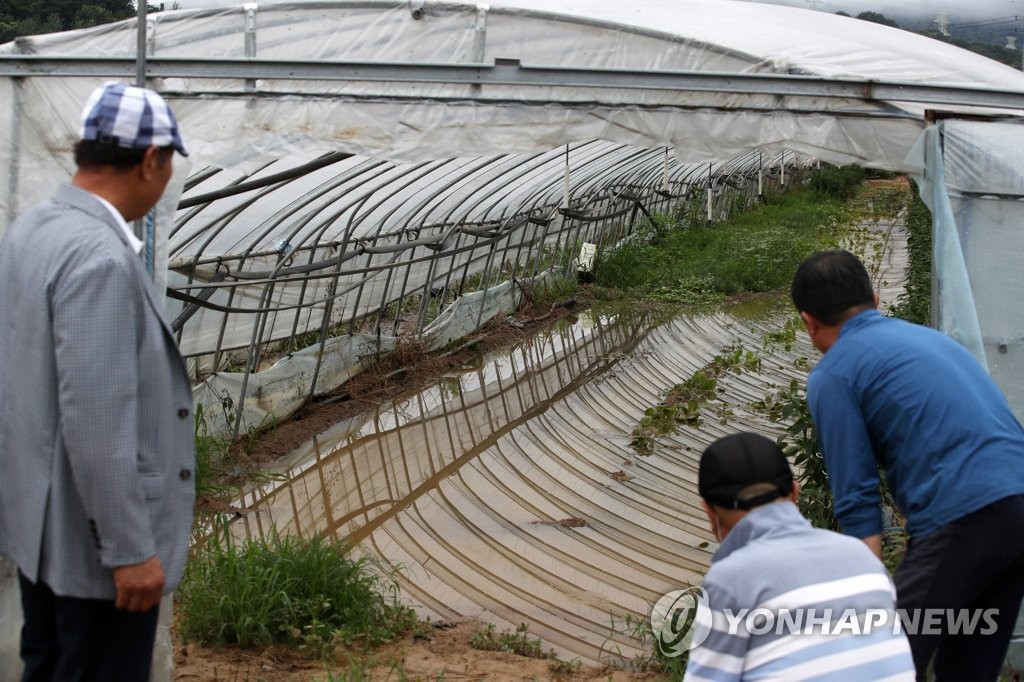- California Assembly OKs highest minimum wage in nation
- S. Korea unveils first graphic cigarette warnings
- US joins with South Korea, Japan in bid to deter North Korea
- LPGA golfer Chun In-gee finally back in action
- S. Korea won’t be top seed in final World Cup qualification round
- US men’s soccer misses 2nd straight Olympics
- US back on track in qualifying with 4-0 win over Guatemala
- High-intensity workout injuries spawn cottage industry
- CDC expands range of Zika mosquitoes into parts of Northeast
- Who knew? ‘The Walking Dead’ is helping families connect
Downpours batter southern regions; rain to start pouring again Thursday
Reports of damage to housing and farmland kept mounting as heavy rains battered southern provinces overnight, with up to 365 millimeters of rain swamping the region since Sunday.
The monsoon rain, which had waned in the southern region as of Wednesday afternoon, will start pouring again throughout the country on Thursday due to the influence of low atmospheric pressure, the Korea Meteorological Administration (KMA) said.
Up to 365.2 mm of rain fell from Sunday to Wednesday morning in the southwestern city of Gwangju, the highest precipitation rate per hour in five years, and 272 mm of rain pummeled Gwangyang, another city in South Jeolla Province, breaking its three-year record.

The damage was concentrated in Gwangju and its surrounding South Jeolla Province, including flooding of housing and farmland, power outages and transport disruption.
A worker at an irrigation facility went missing in a rural village in the county of Hampyeong while inspecting a floodgate, with around 90 firefighters searching for the missing person.
A stream inundated a town in the county of Hwasun early Wednesday, and housing and farmers’ huts sunk under flood waters in the county of Damyang. A total of 41 cases of flooded housing, 33 cases of road flooding and 11 other cases of damage were reported in the region.
In Gwangju, where 185 cases of damage were reported from the downpour overnight, a city bus became waterlogged and the bus driver had to escape unaided Tuesday night.
Earlier, twenty-one people were evacuated from their homes in Gwangju, South Jeolla Province and South Gyeongsang Province after trees fell on their houses or due to fears of flooding.
Twenty-five out of 53 passenger ships on 18 routes that shuttle between the islands in South Jeolla province were out of service and hiking trails in national parks were off limits, according to a local official.
Some 335 households suffered a power outage for over three hours late Tuesday, due to a lightning strike in Naju, a city in South Jeolla Province, and a similar blackout occurred in Gwangju, with power knocked out in more than 100 households for over an hour.
The anti-disaster office under the interior ministry upgraded the heavy rain advisory to “alert” from “caution” late Tuesday in South Jeolla and South Gyeongsang provinces.

The volume of precipitation recorded in an hour in June peaked this year, beating its previous records in many regions, including 54.1 mm in Gwangju, and 74.5 mm in Namhae county in South Gyeongsang Province on Tuesday, and 49.3 mm in Buan county in North Jeolla Province on Wednesday.
The monsoon rain is expected to come to a lull due to the influence of high atmospheric pressure nationwide, but the greater Seoul region, the western region in Gangwon Province, and Chungcheong Province will see showers accompanied by strong wind, lightning and thunder until the afternoon. It will travel to affect the inland areas of South and North Jeolla provinces and North and South Gyeongsang provinces in the afternoon.
The state weather agency also warned against possible ice pellets, a type of hail, in the region.











